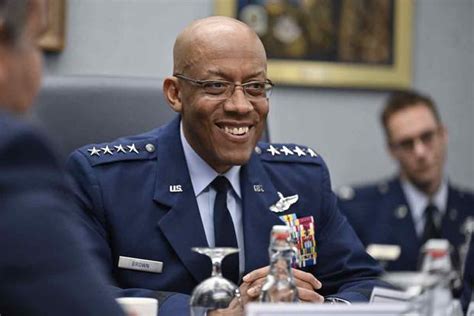Readout: Gen Brown, Joint Chiefs Meeting
This blog post will provide a comprehensive overview of a hypothetical readout from a meeting between General Brown and the Joint Chiefs of Staff. Since no such public readout exists, this will be a fictionalized account based on plausible scenarios and common themes discussed in such high-level military meetings. Remember, this is for illustrative purposes and does not reflect actual events or discussions.
Key Topics Discussed:
The hypothetical meeting likely covered several critical areas vital to national security and defense strategy. Here are some possible highlights:
1. Global Strategic Landscape:
-
Emerging Threats: The meeting may have focused on assessing and prioritizing emerging threats, including those from Russia, China, North Korea, and non-state actors. Specific discussion points might have involved analyzing evolving military capabilities of adversaries and potential escalation scenarios. The impact of ongoing conflicts, such as the war in Ukraine, on global stability would also be a major talking point.
-
Regional Instability: Areas of concern like the South China Sea, the Middle East, and the Sahel would be examined, focusing on the potential for conflict, the role of regional allies, and the need for proactive diplomatic engagement. This includes analyzing the dynamics of power shifts in these regions and identifying potential flashpoints.
2. Force Modernization & Resource Allocation:
-
Budgetary Constraints: The meeting likely involved intense debate over the optimal allocation of limited resources. Balancing competing demands for modernization across various branches of the military, while ensuring readiness for current operations, is a perpetual challenge. This is particularly relevant in discussions regarding next-generation weaponry and future defense needs.
-
Technological Advancements: Discussions would involve the integration of emerging technologies, such as artificial intelligence, hypersonic weapons, and cyber warfare capabilities, into defense strategies. Understanding the implications of such advancements for both offense and defense is crucial in the context of military technological superiority.
3. Interagency Coordination & Collaboration:
-
Civil-Military Relations: Effective coordination between the military and civilian government agencies is vital for successful national security policy. The meeting may have addressed how to improve communication and collaboration across different government departments to achieve seamless execution of national security objectives.
-
International Alliances: Maintaining and strengthening alliances with key partners is crucial for addressing global challenges. Discussions may include strategies for enhancing cooperation and coordination with allies in addressing shared security threats, fostering mutually beneficial partnerships, and ensuring global stability.
Potential Outcomes & Next Steps:
A meeting of this nature would likely result in several key decisions and action items. These might include:
-
Revised Strategic Guidance: The meeting could lead to adjustments in the overall military strategic guidance, adapting to the changing global landscape and emerging threats. This might involve reprioritizing resources, reallocating funds, or changing deployment strategies.
-
Enhanced Training & Exercises: To improve readiness and interoperability, the Joint Chiefs may have agreed to increase the frequency and complexity of joint training exercises, simulating potential scenarios to better prepare forces for future challenges. This would focus on strengthening combat readiness and improving operational capabilities.
-
Increased Diplomatic Engagement: To mitigate potential conflicts, the meeting could have emphasized the need for increased diplomatic engagement with key stakeholders, fostering strategic dialogues and seeking peaceful resolutions to global conflicts.
Conclusion:
This hypothetical readout highlights the complex and multifaceted issues addressed in high-level military meetings. The fictional scenario presented showcases the critical importance of strategic planning, resource allocation, and interagency cooperation in maintaining national security and responding to evolving global challenges. The future of national security depends on continuous analysis, adaptation, and proactive engagement in the face of ever-shifting threats and opportunities.
